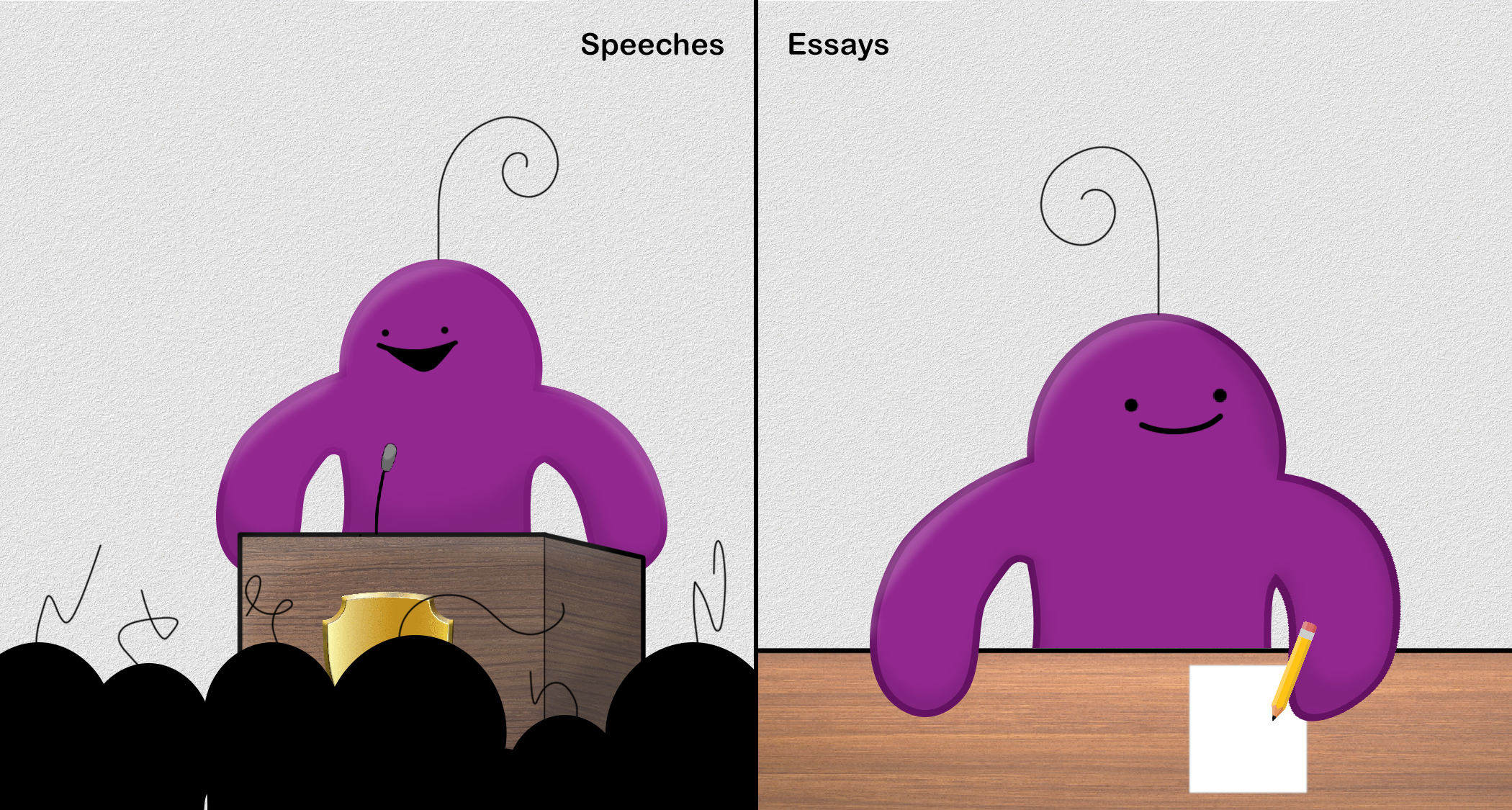Most students write hundreds of short answer responses, essays, and written exams over the course of their years at school. While presentations become increasingly common as you progress throughout your education, the average student will probably have much more writing experience. And to someone with little speaking experience, it’s easy to miss the many differences between speeches and essays. However subtle these differences may seem at first, you must know them if you wish to improve as a speaker.
If you’re a little intimidated at this point, don’t worry too much. I have good news for you: these differences are rather simple and become strikingly obvious once you learn a little about them. Here is a simple list of the most important variations between great essays and great speeches:
| 🙂 |
Essays |
Speeches |
|
Brevity |
In writing, the author can afford to put their thoughts into complicated sentence structures. If needed, the reader can always go back and read something again. |
In speeches, complicated sentences can make the listener feel lost while trying to understand the speech. Instead, speakers should simplify their points as much as possible to keep their audience engaged. |
|
Vocabulary |
The writer often aims to use formal, sophisticated word choice and be as descriptive as possible. Many times, writers avoid contractions or slang terms. |
While the speaker should provide details to help the audience visualize things, they use simple, familiar language if possible. This makes them seem trustworthy and more fun to listen to. |
|
Thought Structure |
Texts can string together complicated thoughts because readers can think things through at their own pace. |
The listeners have to move through thoughts at the same pace as the speech, so the speaker should pause appropriately for the audience to catch up. |
|
References to Past Points |
The writer can always refer to a previous line or a different piece because the reader has the time to reread or look things up. |
The speaker should emphasize anything they will definitely come back to. However, they often reference past points with a little bit more explanation to refresh listeners’ minds. |
|
Visual and Other Aids |
Writers only have formatting and sometimes images to emphasize points or convey new points to the reader. |
Speakers can use images, vocal variety, gestures, and body language to get unspoken points across or emphasize things. |
|
Pauses |
Writers only have paragraph breaks to provide breaks between thoughts. |
Speeches can and should have plenty of pauses, ranging in length, to allow the audience’s minds to “absorb” certain thoughts. |
No matter how great of a writer someone is, a different skill set is required to convey the same thoughts to a live audience. Great speakers and writers know how to switch between these skill sets. Even if you’re a beginner, just being mindful of these different skills can help you advance your own levels of mastery. Now, the next time you have to present something, think about whether you can better demonstrate these qualities. You can always improve at something!


